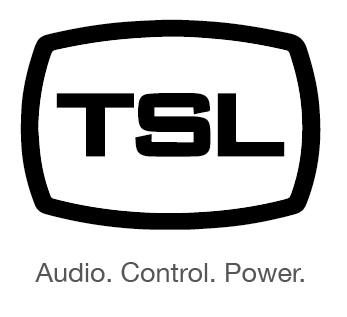A Look at Playout and Control

A global integration company was recently tasked with the installation of an advanced broadcast monitoring and control solution for a major sports broadcast network. Turning to TSL, the customer successfully deployed an advanced control solution using multiple processing nodes and control panels to create an integrated system that provides complete oversight of playout content.
TSL’s tailored control solutions, which include the Tallyman Virtual Panels, allow operators to monitor the entire signal chain to provide the required information and real-time alerting in multiple forms, with extensive use of SNMP as well as proprietary protocols.
Within the sports network’s playout facility, there are over 1700 SNMP traps and five proprietary interfaces from multi-viewers, monitoring diverse elements such as loss of signal, and Dolby and SCTE presence at critical points through the chains. The customer was able to simplify operations, providing users with a condensed, straightforward way of monitoring numerous signals across multiple signal chains and geographically separated facilities. By condensing this information into an intuitive and focused user interface, operators can manage multiple signal paths at once, with a clear view of overall system health and immediate alerts of unforeseen events during broadcast.
With TSL’s virtual panels the customer’s broadcast operators are immediately alerted if there are any alarms, freezes or other unexpected issues during a broadcast stream, so errors can be corrected in real-time. The panel is configurable to suit any workflow and provides operators with a condensed way to oversee workflows, in this case, 12 signal chains are monitored simultaneously with more being added. Alarms can easily be seen, identified and resolved. Audible alert buzzers are also triggered to draw attention to the monitoring system and can be muted by the operators once they are aware of the issue. To ensure safe operation when working with a multitude of signals, it’s beneficial that operators can also selectively lock out controls to reduce the occurrence of human error during a program.
Key elements of the monitoring solution are the powerful capabilities brought by TSL’s control processors – the GTP-32 and TM1-Mk3+. With both DTMF and SCTE monitoring, the TSL control system monitors the DTMF using pre-determined criteria for the expected audio tones within specific timeframes and alerts when there is an issue. With the flexibility of adapting to any user-configurable time period, the system allows users to align the system parameters to best fit its specific broadcast requirements. The same goes for SCTE, where extracted SCTE-104 or SCTE-35 messages from the media are checked against a set of rules such as matching PID’s or specific message content.
The primary job of the TSL control system is to make it simple for one person to monitor the 12 channels at once, allowing operators to easily redirect a signal flow or alert an engineer of an issue. The system’s secondary function is to log alarms and signal paths throughout a broadcast, which can be presented if there are any issues within the content such as SCTE or DTMF messages not being sent where and when they’re expected. Logs can be easily accessed through a web browser or FTP for a ten-week period. The result is a system that keeps operators informed in both real-time and retrospectively of events as they happen, giving operators the ability to more efficiently overcome issues as they happen and the ability to review issues that happened at a later date.

